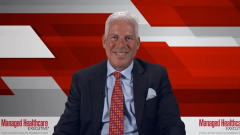Overtreatment and Treatment Delay in Wet AMD
Diana Do, MD, and Steven Peskin, MD, MBA, FACP, discuss overtreatment and undertreatment in wet AMD in addition to the risks associated with delays in therapy.
Episodes in this series
Diana Do, MD: In wet age-related macular degeneration [AMD], there is a theoretical risk of overtreatment. But in clinical practice, we haven’t seen this. Most phase 3 clinical data had patients dosed on fixed regimens. That is, the anti-VEGF medicine was given every month or every 2 months. We have not seen any significant adverse events related to this frequent fixed dosing. Also, in clinical practice, most retina specialists do not employ monthly or bimonthly treatment. The totality of the evidence to date suggests that intravitreal VEGF inhibitors are extremely efficacious and safe. But we have not seen any safety signals related to overdosing, and we know that the No. 1 culprit for vision loss in wet age-related macular degeneration is underdosing in clinical practice.
Delaying treatment for eyes with wet age-related macular degeneration can be very detrimental. We know that undertreatment or no treatment of wet age-related macular degeneration can lead to irreversible scarring and vision loss in the central vision of a patient. Vision loss has an adverse effect on the quality of life a patient and can lead to loss of independence, an inability to read or drive. Therefore, prompt and timely continual treatment of their eye disease is essential to maintaining and improving vision.
Steven Peskin, MD, MBA, FACP: I was asked to talk about delaying therapy in wet AMD. In our approach, we’re going to look at requests coming from retinal subspecialists, clinicians who are in the best position to determine whether the person with wet AMD is appropriate for biologics. That will be our true north. We certainly have an authorization process that’s pretty much a standard operating procedure among health plans for biologics. That’s really going to be our approach. It’s the clinician’s decision about what treatment to use at what time. Certainly, site of service is something we look at, and most of these treatments are given in office.
Thinking about the challenges associated with wet AMD, any condition where there’s a level of complexity will always offer challenges. That said, we’re feeling very good about where we are working with our retina subspecialist to develop innovative payment models, which reward better outcomes, affordability, and higher level of patient experience. Hopefully, the fourth part of the aim is health care professional sustainability and reducing some of the abrasion that’s associated with some of the interventions where we can have the clinicians accountable for clinical outcomes, economic outcomes, and patient experience, as well as reduce some of what might be called the hassle factor.
Transcript edited for clarity.
Newsletter
Get the latest industry news, event updates, and more from Managed healthcare Executive.






















































